Dokusan itself is 'no ego' practice. In Dokusan,
Master and disciple both abandon common
sense
and the feelings of normal life. We
must
use our whole body to get the truth.
Student's,
with a saintly feeling, go to Dokusan
with
the spirit that they are going to Buddha's
place.
Though the Master has human faults,
when
he receives Dokusan with a dharma eye,
he
becomes one Buddha. The Master, without
reservation,
kills all discrimination.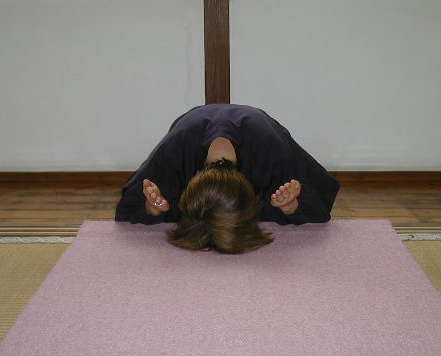
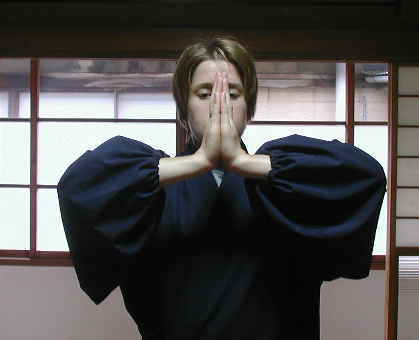
With this spirit we have to follow
the rules
of Dokusan.
In the entrance, bow three times before
entering
the Dokusan room. Enter the room with
hands
in Gassho form and bow three times
before
the Master. Kneel quietly and slide
forward
so that there is a space of about 50
cm between
the Master and your knees. Put hands
in Zazen
form on your lap and sit up straight.
Quickly
say, "My Koan is …" and
give your
answer. Questions and answers should
be simple
and we should never talk about such
things
as Philosophy or Buddhism. Do not ask
about
theories and 'isms' in Dokusan. Such
questions
should be asked at another time, outside
of Dokusan. Personal issues should
not be
addressed in Dokusan. In Dokusan, always
do only practice.
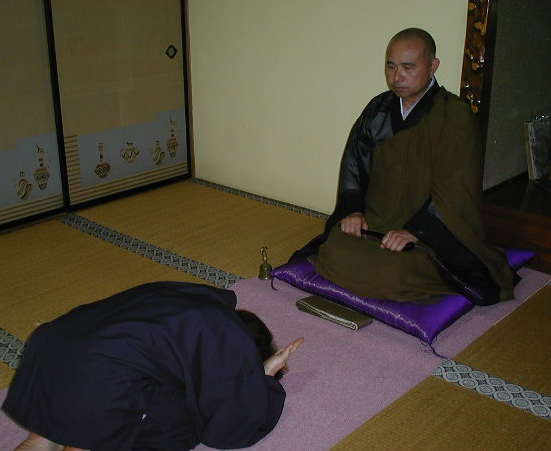 When the Master rings the bell it is a signal
for the next person to come and for you to
leave. At this point, though you may wish
to say more, you must leave. When the Master rings the bell it is a signal
for the next person to come and for you to
leave. At this point, though you may wish
to say more, you must leave.
Before standing up bow once. Exit the
room
and bow three times in the entrance
before
returning to your seat in the Zendo.
Basically, in Dokusan, we must always
bow
three times though in Toshoji, because
there
are sometimes many people doing Dokusan,
we only bow once.
When going to Dokusan, do not go too
quick
nor too slow. We disturb other people
with
loud running or by taking too much
time walking
slowly.
Hands should be in Sashu when going
to and
from Dokusan and in Gassho while in
the Dokusan
room. Waiting for and going to and
from Dokusan
is not a rest time. Carefully and seriously
we must always become one with our
Koan.
|
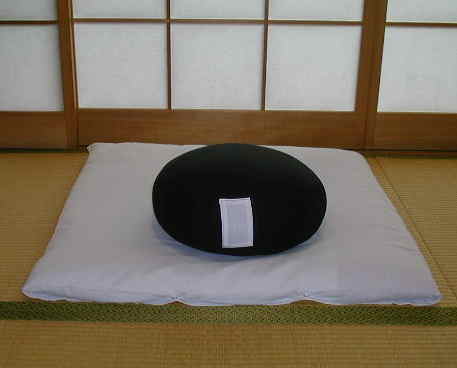 When doing Zazen, use a thick mat. Legs will
become painful if the mat is too thin. We
cannot continue true Zazen if our mind is
full of pain. Having to endure painful legs
is not Zen practice. Please feel free to
use a thick mat.
When doing Zazen, use a thick mat. Legs will
become painful if the mat is too thin. We
cannot continue true Zazen if our mind is
full of pain. Having to endure painful legs
is not Zen practice. Please feel free to
use a thick mat.

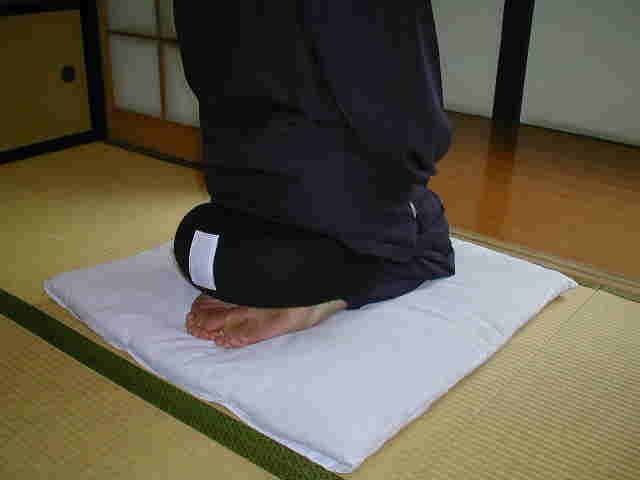
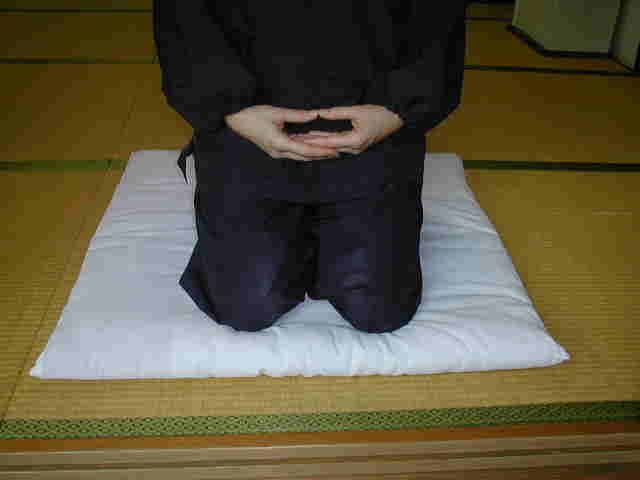
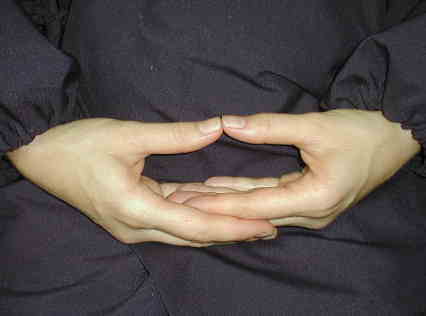
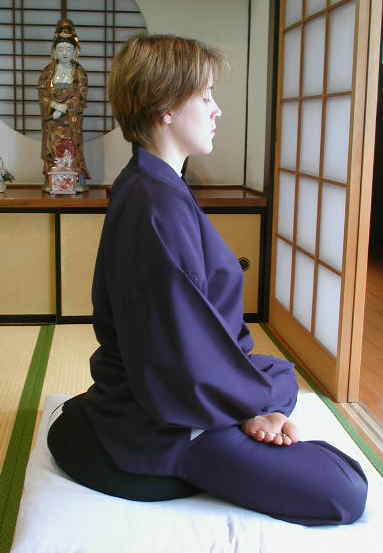 Sit with a straight back and always try to
achieve good form. This is very important.
Sometimes, though we think we are sitting
straight, our backs are curved. When
you
are sitting straight, you should feel
that
your back is a little bit arched. Students
sitting with bad form should feel that
they
are not doing Zazen.
Sit with a straight back and always try to
achieve good form. This is very important.
Sometimes, though we think we are sitting
straight, our backs are curved. When
you
are sitting straight, you should feel
that
your back is a little bit arched. Students
sitting with bad form should feel that
they
are not doing Zazen.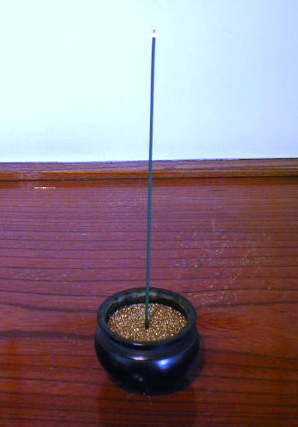 Use something to check the time while sitting.
The feeling of time is always different
depending
on the body's condition. Thinking about
how
long we have been sitting will distract
the
mind. Use a watch or incense stick
during
Zazen.
Use something to check the time while sitting.
The feeling of time is always different
depending
on the body's condition. Thinking about
how
long we have been sitting will distract
the
mind. Use a watch or incense stick
during
Zazen.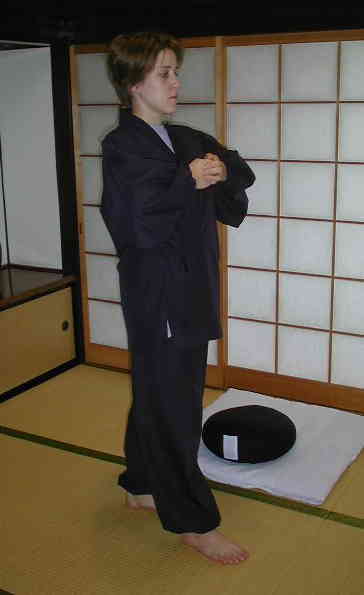 Kinhin is not a rest. It is walking Zen.
People who are doing Susokukan must continue
counting while walking. Those doing Shikantaza
must walk 'Shikan' (just) walking. Normally
we think Kinhin is for refreshing ourselves
and stretching the legs. In a quiet environment
we do not receive outside influence. Moving
and noises influence us and cause discrimination.
For this reason, Buddha made Kinhin so that
we can try true practice while moving.
Kinhin is not a rest. It is walking Zen.
People who are doing Susokukan must continue
counting while walking. Those doing Shikantaza
must walk 'Shikan' (just) walking. Normally
we think Kinhin is for refreshing ourselves
and stretching the legs. In a quiet environment
we do not receive outside influence. Moving
and noises influence us and cause discrimination.
For this reason, Buddha made Kinhin so that
we can try true practice while moving.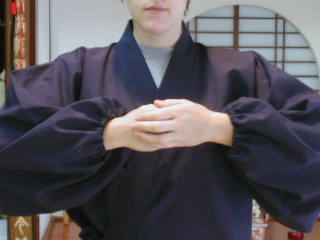 The founder of Toshoji, Harada Sogaku Roshi,
said that practicing students should always
keep the hands and legs, with the right under
and the left on top because Buddha sits the
opposite of this. Toshoji as well as Rinzai
follow this opinion.
The founder of Toshoji, Harada Sogaku Roshi,
said that practicing students should always
keep the hands and legs, with the right under
and the left on top because Buddha sits the
opposite of this. Toshoji as well as Rinzai
follow this opinion.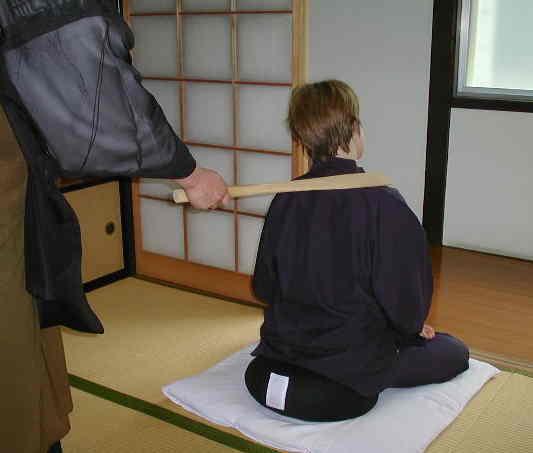


 When the Master rings the bell it is a signal
for the next person to come and for you to
leave. At this point, though you may wish
to say more, you must leave.
When the Master rings the bell it is a signal
for the next person to come and for you to
leave. At this point, though you may wish
to say more, you must leave.